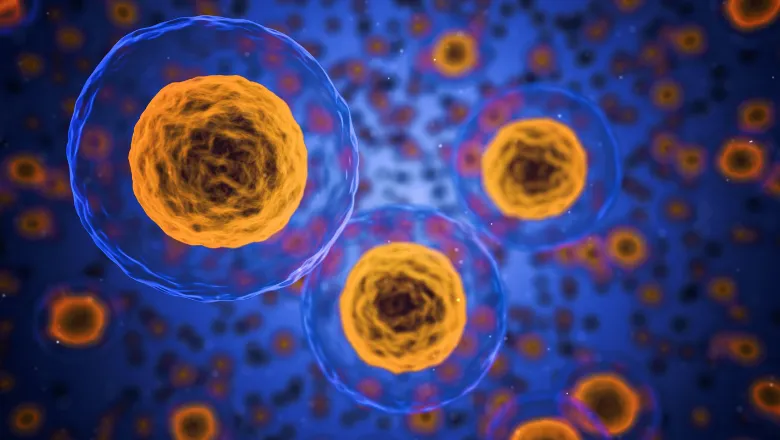This work is a great example of industry-academia collaboration combining different but complementary research skills – a reliable formula for successful partnerships. The findings from this study offer insights into the impact of each labelling technique on the intrinsic properties of the EVs, which are highly relevant to further exploit their target ability and therapeutic potential.
Professor Khuloud Al-Jamal, School of Cancer & Pharmaceutical Sciences
16 February 2021
Using extracellular vesicles in the development of cancer therapeutics
A collaboration between the School of Cancer & Pharmaceutical Sciences and pharmaceutical company, AstraZeneca, highlights promising advances in natural drug delivery systems in cancer therapy.

Over the past decades, a multitude of synthetic drug delivery systems have been developed and introduced to the market. However, applications of such systems are limited due to inefficiency, cytotoxicity, and immunogenicity. At the same time, the field of natural drug carrier systems has rapidly advanced, with one of the most prominent examples of such carriers being extracellular vesicles (EVs).
EVs are membrane-bound vesicles released from cells that can transport cargo containing DNA, RNA, lipids, and proteins between cells as a means of intercellular communication. In view of their ability to do this in a safe and effective manner, EVs offer a unique platform for the delivery and release of a wide spectrum of therapeutic agents, attracting considerable interest amongst the scientific community.
In a joint effort, scientists from the School of Cancer & Pharmaceutical Sciences and AstraZeneca have combined their expertise to examine their potential in cancer therapeutics. Specifically, the team at Discovery Sciences AstraZeneca is specialised in bioengineering of EVs for targeted drug delivery and the laboratory at King’s, led by Professor Khuloud Al-Jamal, works on developing EVs as nanocarriers for drug delivery, and is specialised in pre-clinical imaging and pharmacokinetics profiling – known as the body’s effect on a drug.
Inspired by the recent work conducted by PhD student, Dr Farid Faruqu, at King’s, using a robust radiolabelling technique to study the biodistribution of EVs quantitatively, AstraZeneca initiated this collaborative project in 2018 to exploit the in vivo behaviour of their engineered and naïve EVs using a battery of imaging modalities.
The two groups will now work together on multiple projects, including the introduction of mechanistic aspects to EVs distribution, as well as other approaches to deliver biological drugs.

